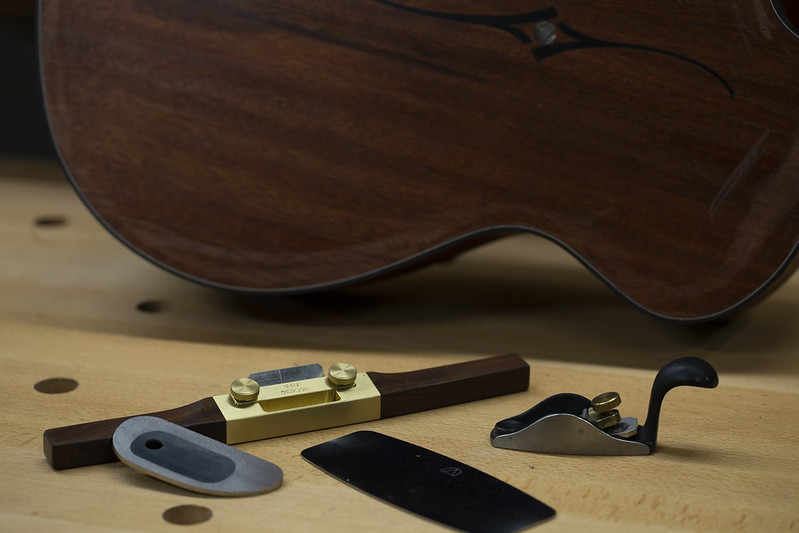I have the guitar body closed and have the Black Ebony binding, end graft, etc. in. Now it is time to clean all that up and since this is a tool orientated build thread here are the tools I use to get the job done:

I'll start at the top and go on around. First we have my newest acquisition an HNT Gordon curve bottomed spoke shave:

The curved bottom lets me get into curved areas like the waist and inside cutaways. It helps with the heel on necks as well. The blade can be reversed which switches it from a plane to a scraper. It has a thick blade and a nice weight to reduce chatter. It's a great tool that goes where others can't.
Then comes this Lie-Nielsen hobby palm plane:

I use this one mostly to clean up the top and back binding and purfling. It is small enough to manage around curves. This plane, like many of the quality contemporary wood planes has a thick blade which allows for nice smooth controllable cuts.
Next up is this thick scraper designed by Alan Carruth:

This is a very rigid scraper plane with a very thick blade. Are you starting to see a pattern here? Contemporary woodworking tools and some scrapers have gone the route of putting some weight behind the blades. Why? Because it works better. It turns what is normally a frustrating, tedious clean up job into well, a less frustrating tedious job.
Finally we have the spring steel Crucible scraper plane:

This is a relatively new design, although it does not have a thick blade the scrapers edge is curved (unlike a typical card scraper) This allows you to use it without having to bend the curve into it. It works both as a push or pull scraper. This is a nice fast scraper for cleaning up larger areas with out wearing your thumbs out.
So besides the ease of use part what makes these better? Well
One is they don't leave little pig tail marks in the wood like an orbital sander does.
The amount of wood you are removing is a lot more controllable than with a power sander.
The wood surface is easier to keep flat like when you are flattening the harder binding on the same plane as the softwood top. Hand sanding and power sanders tend to leave little gullies in the softer wood.
You are not smashing saw dust into the wood pores so the finished wood is cleaner and the figure is more defined.